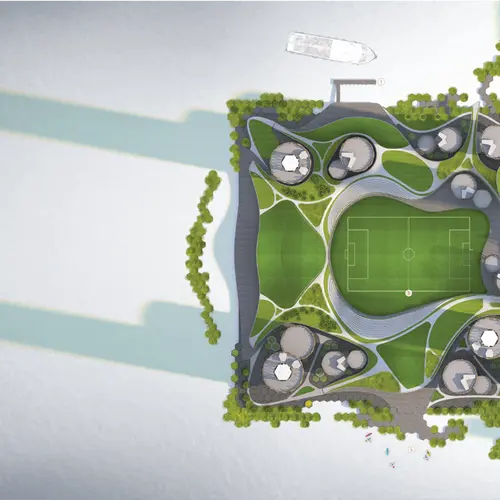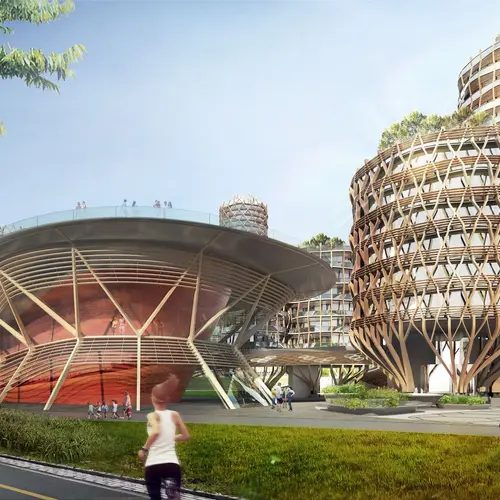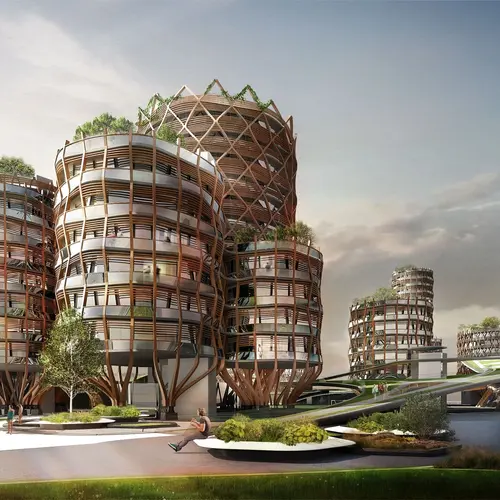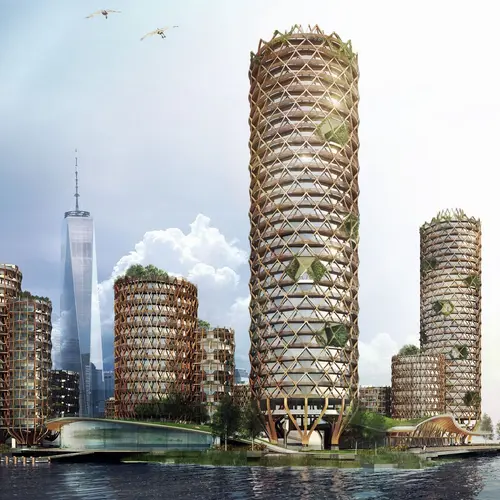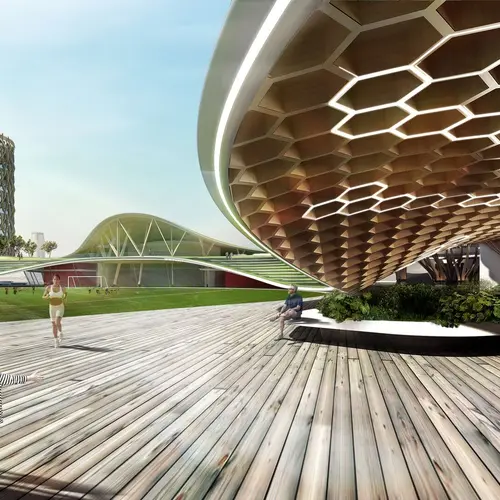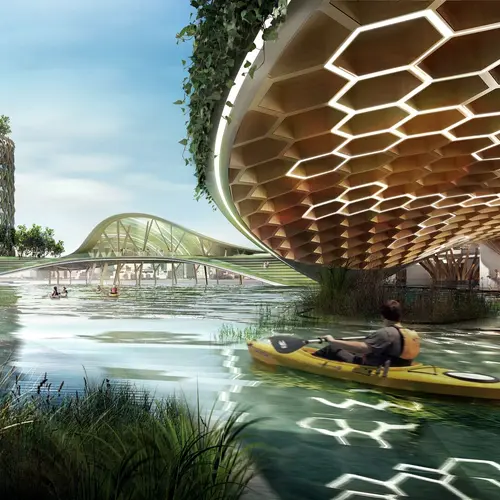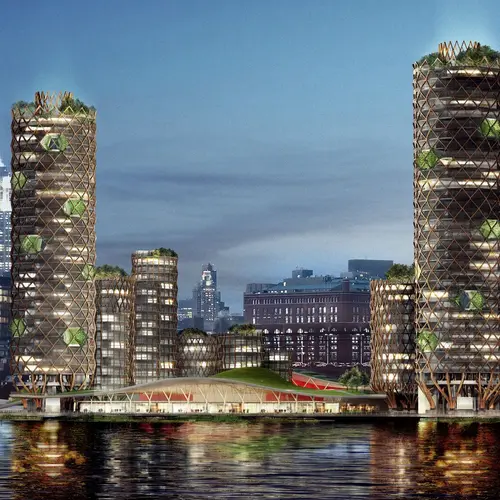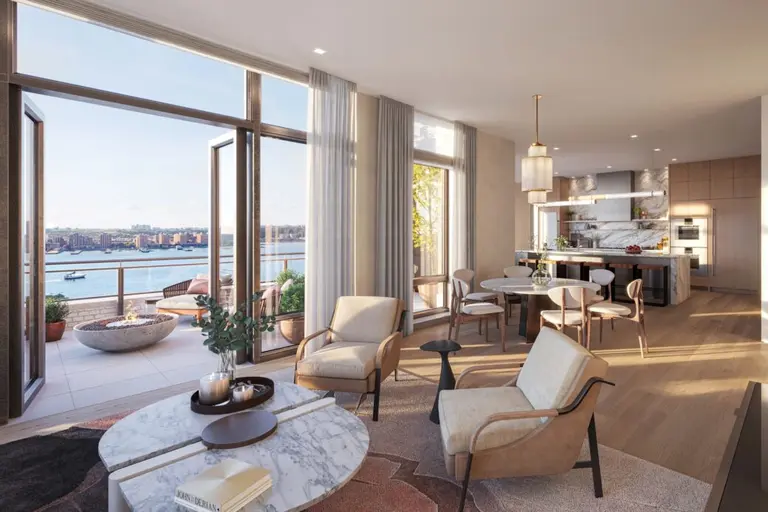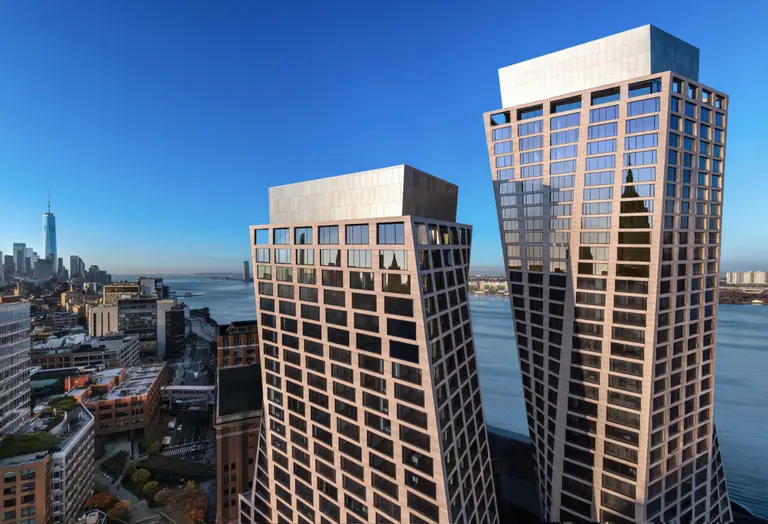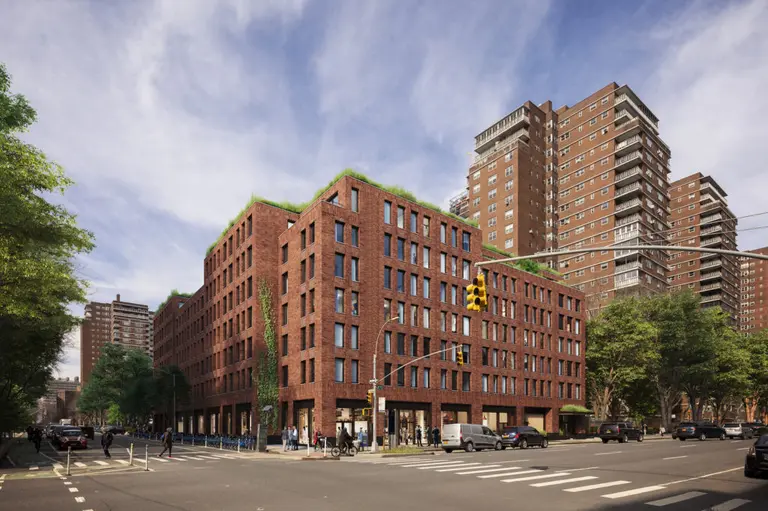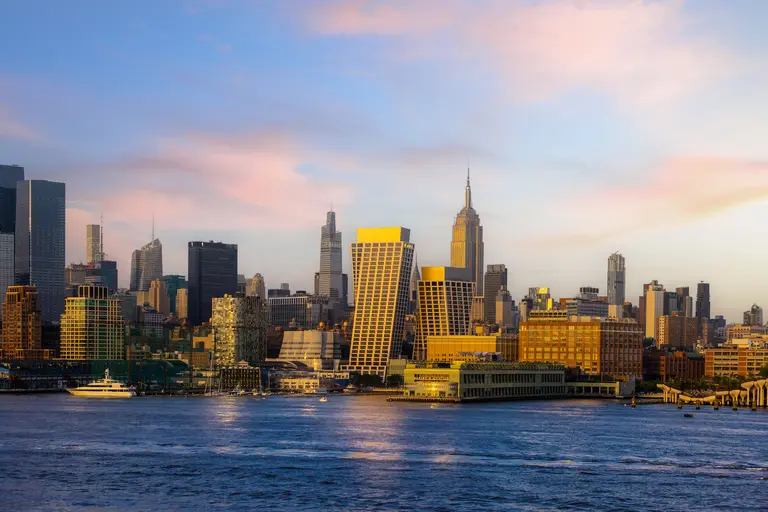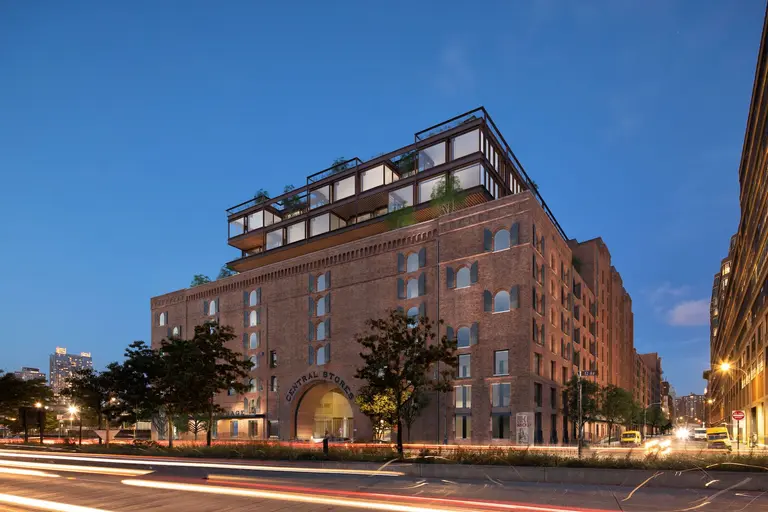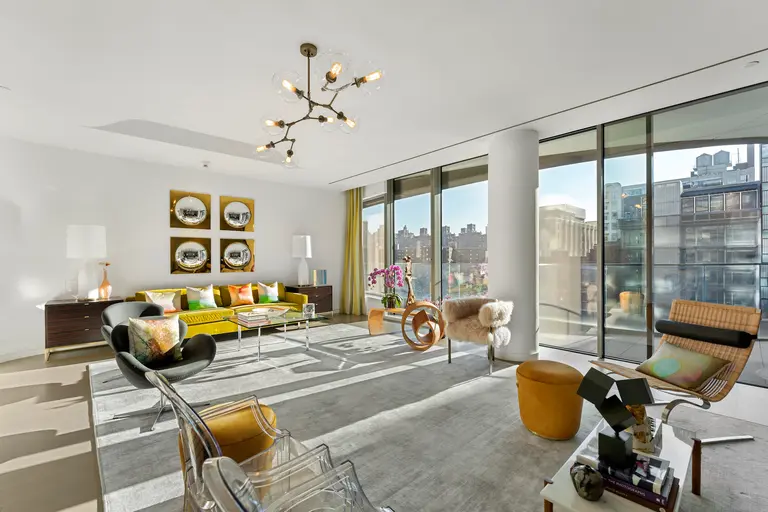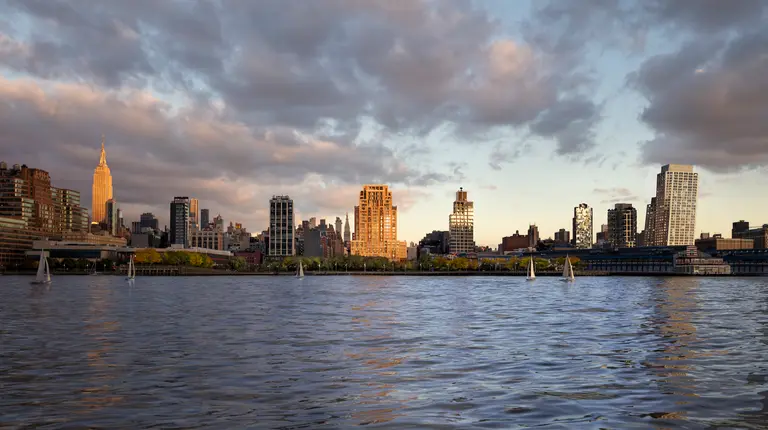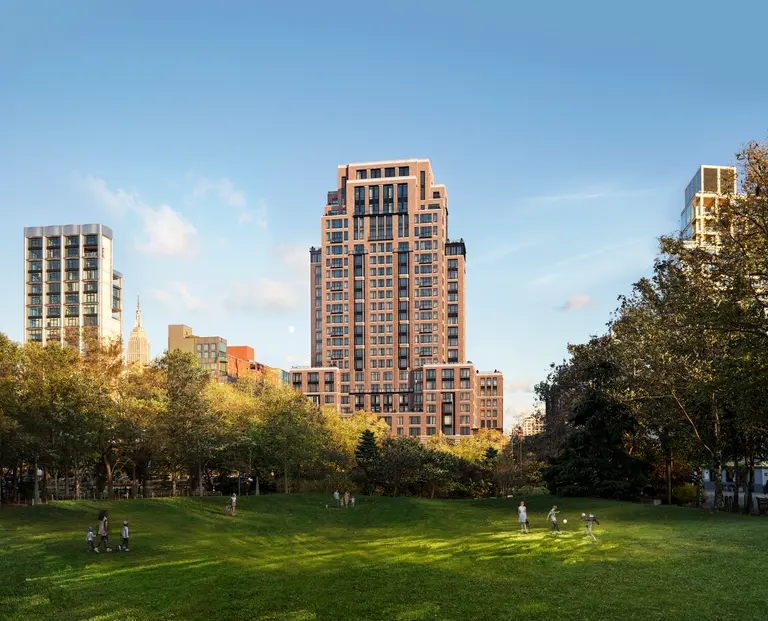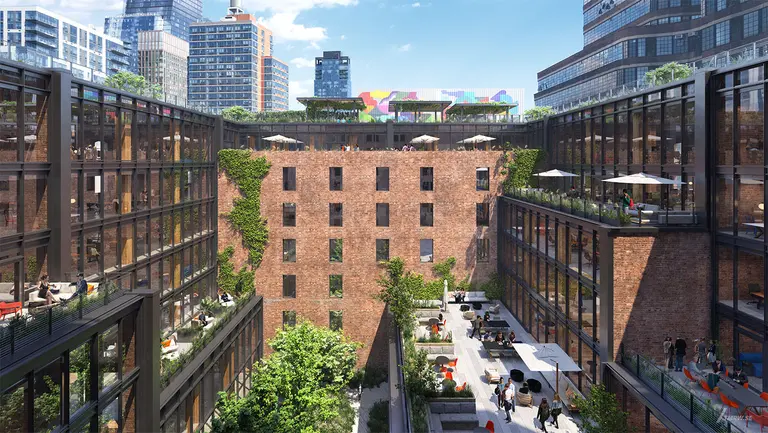Pier 40 concept envisions an offshore apartment complex that allows for sea-level rise
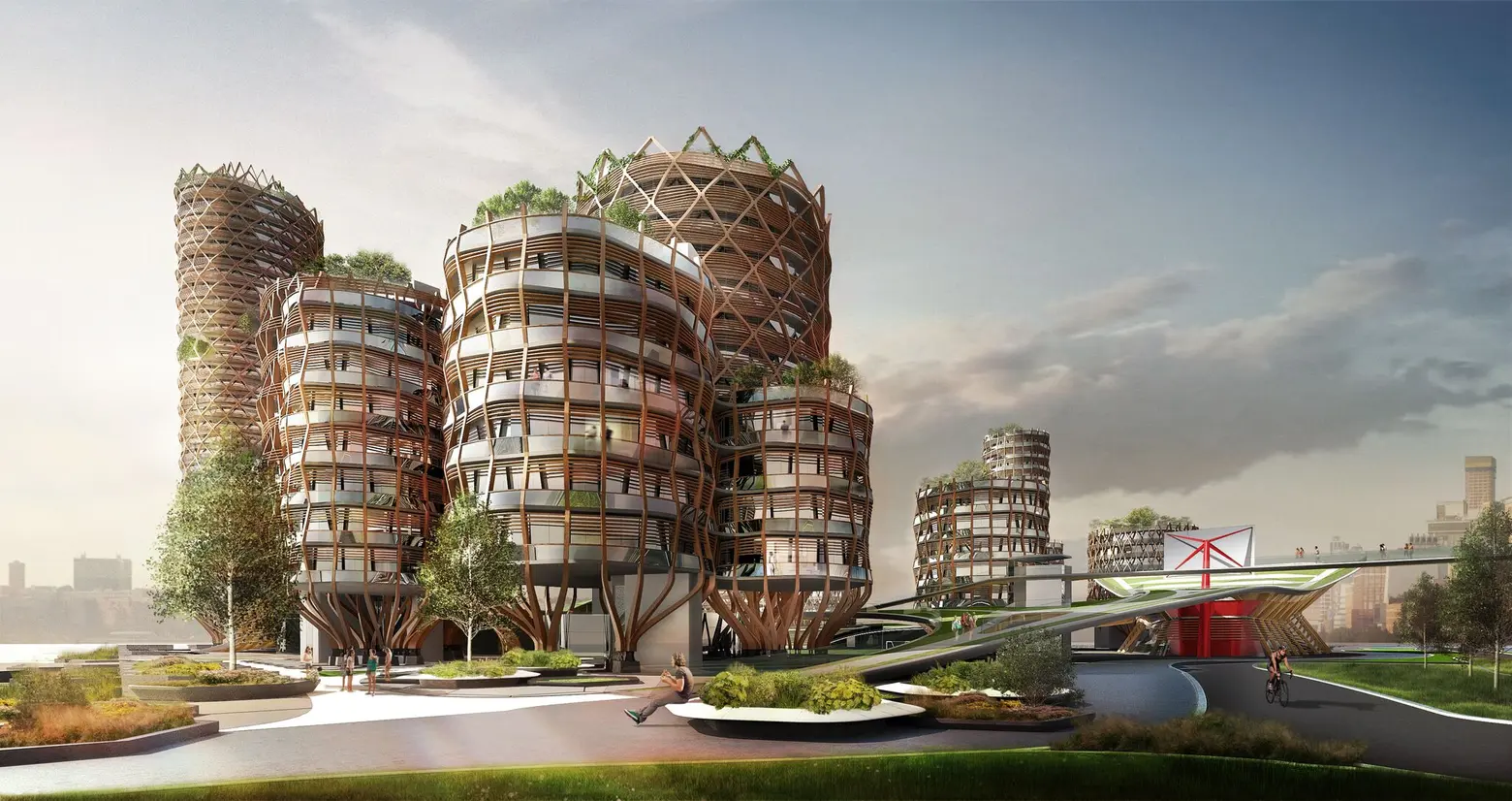
Local multidisciplinary creative firm DFA has come up with a concept for the rehabilitation of Manhattan’s rapidly disintegrating Pier 40 that would provide housing and other services, but would also adapt to the predicted rising sea levels of future New York City. Dezeen reports on the firm’s fascinating idea for a future-proof housing, commercial and recreation complex that rises from the Hudson River in the West Village and would be able to remain above water in the event of rising sea levels, while addressing the city’s dire need for affordable housing and the ability to resist flooding as a result of climate change.
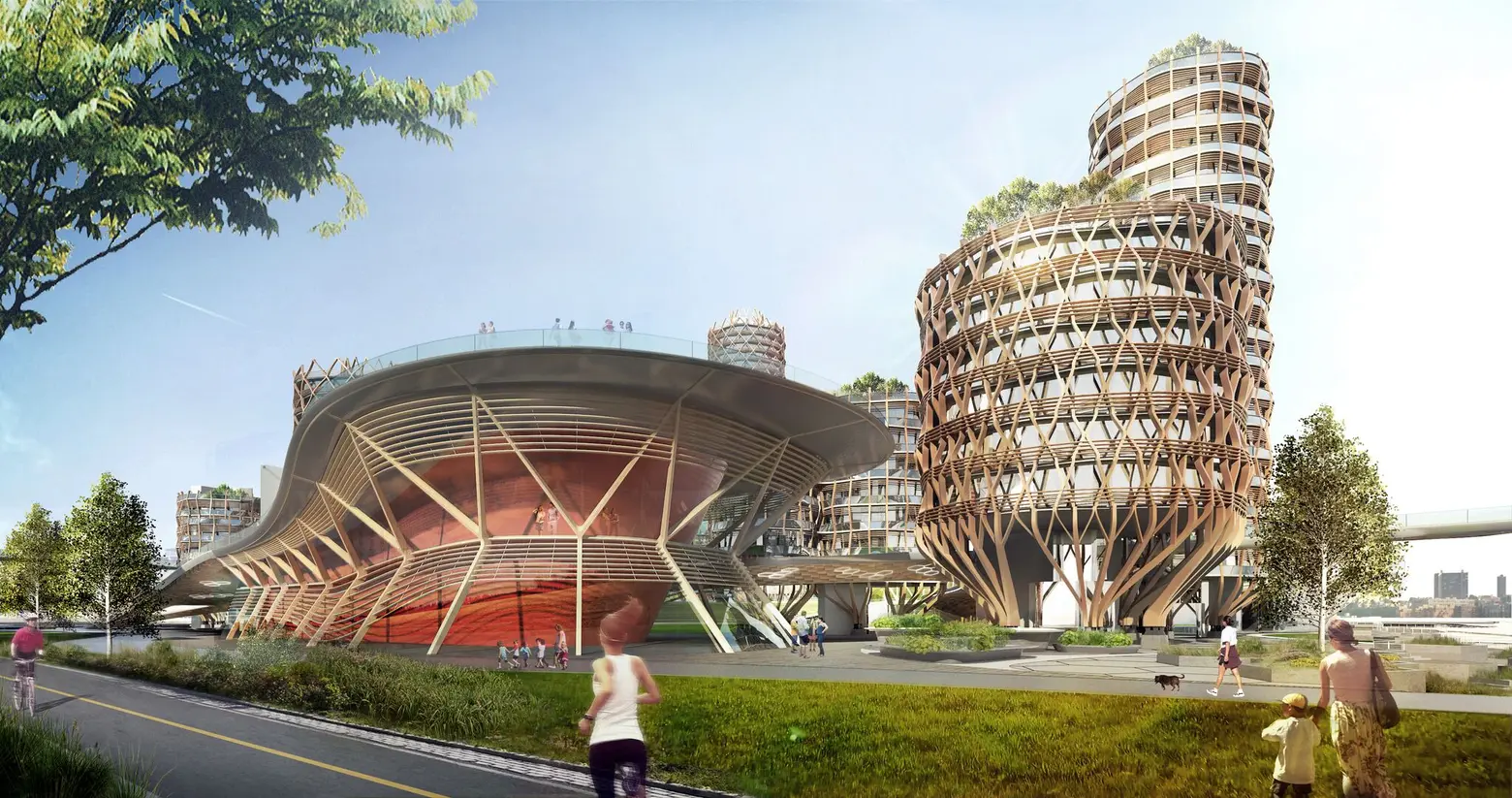
The pier, which currently extends 820 feet over the Hudson River and is being used for a parking garage and a football field, has been in the news in recent years; the structure is badly in need of repair. The most recent solution has come in the form of a deal struck by Governor Andrew Cuomo involving a transfer of unused development rights and the subsequent infusion of $100 million for the development of residential buildings and shops over a period of 10 years.
According to the architecture studio’s founding principal, Laith Sayigh, “We see so many projects going up in New York that are quick, chart-driven responses to serious problems. These short-term resolutions will not safeguard the city from rapid changes in the environment or protect future generations of people.”
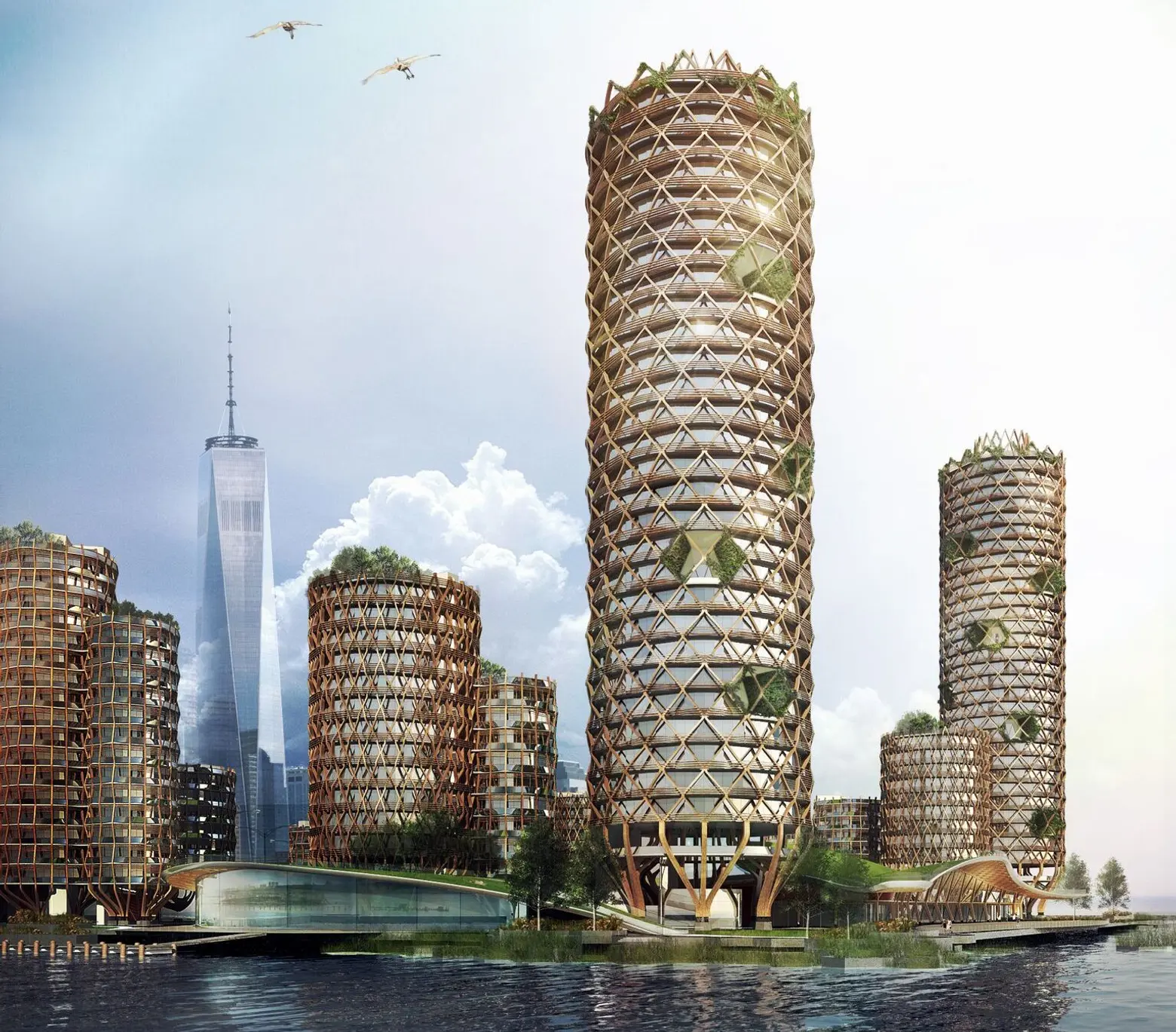
The concept that does safeguard future generations includes 19 cylinders that would range from 96 to 455 feet tall, clad in a golden net of window frames and greenery. The cylindrical high rises would provide 450 units of housing from affordable to luxury.
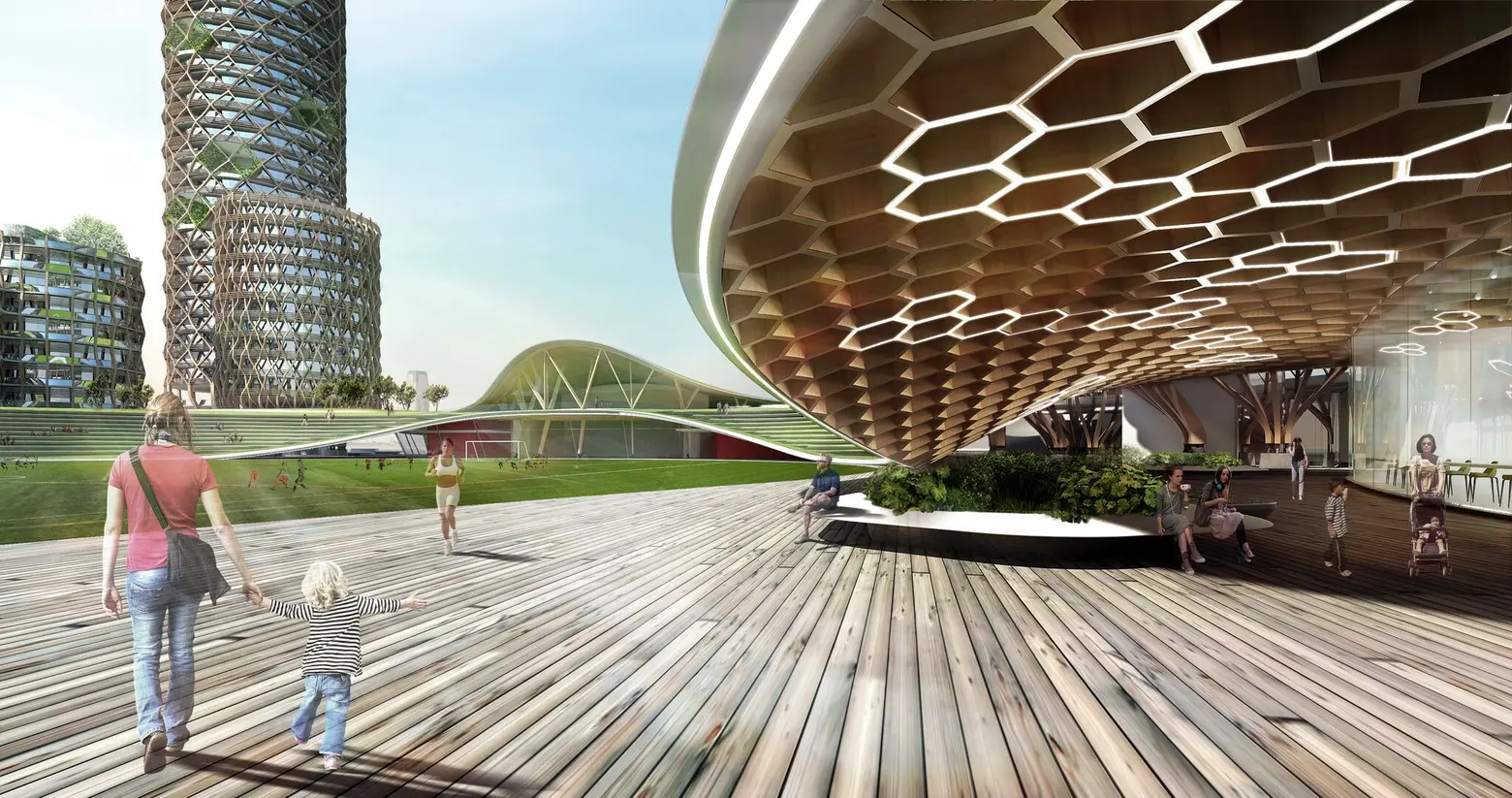
The towers would be arranged in 11 clusters above the pier’s structural base of concrete-reinforced steel H-pile girders submerged in the river. The residential units would be raised 60 inches above expected storm surge levels to guard against flooding from sea level rise. Around the clusters, an elevated undulating path would weave over a series of public pavilions, which would remain open until 2050, when water levels are expected to rise as much as 30 inches.
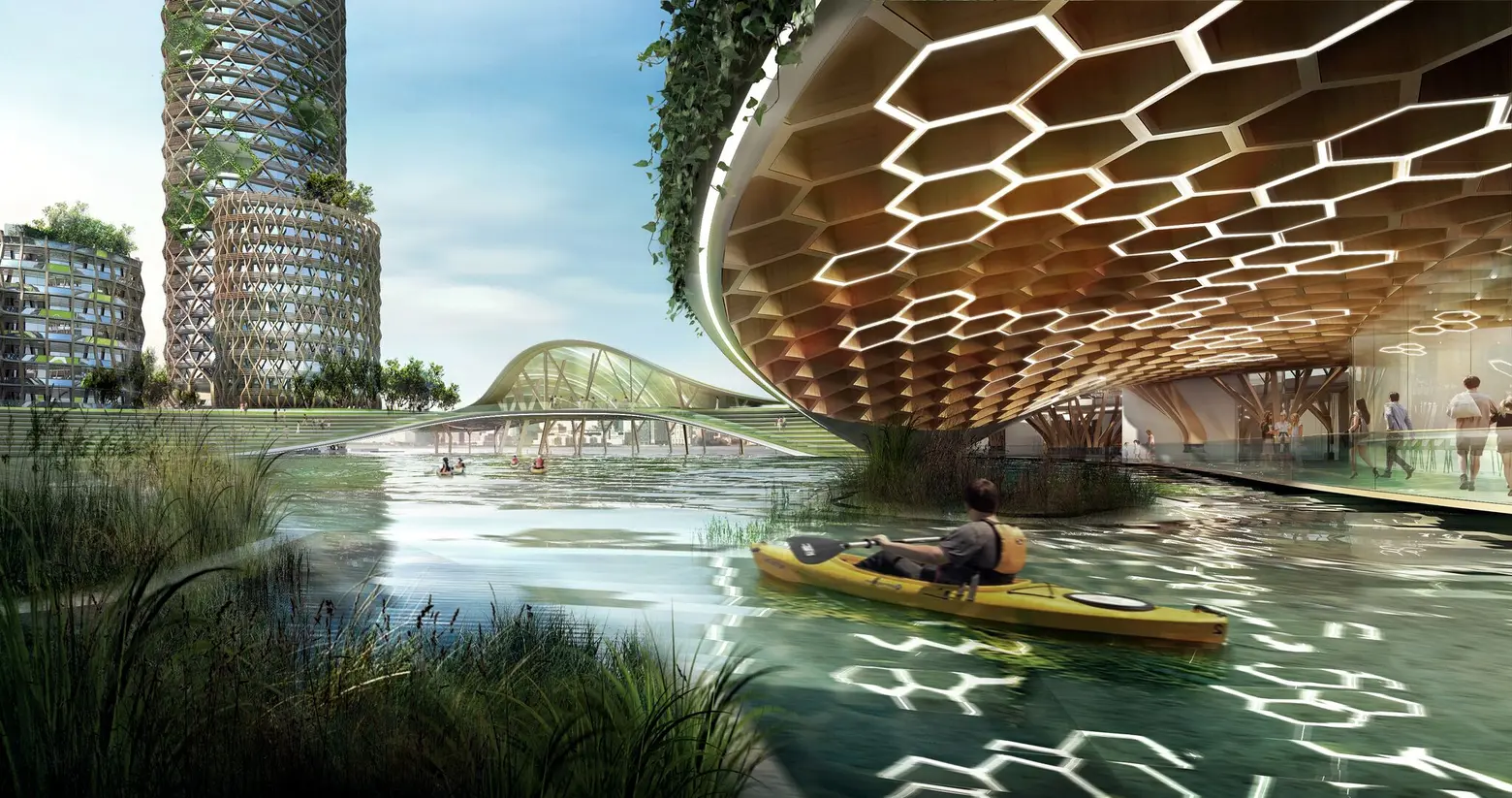
50 years on, when the tidal river may have risen as much as 50 to 75 inches, submerging the pavilions, the platform above would be able to provide access to the complex. Other forms of protection against storm damage include a series of floating pods positioned around the pier to act as a buffer.
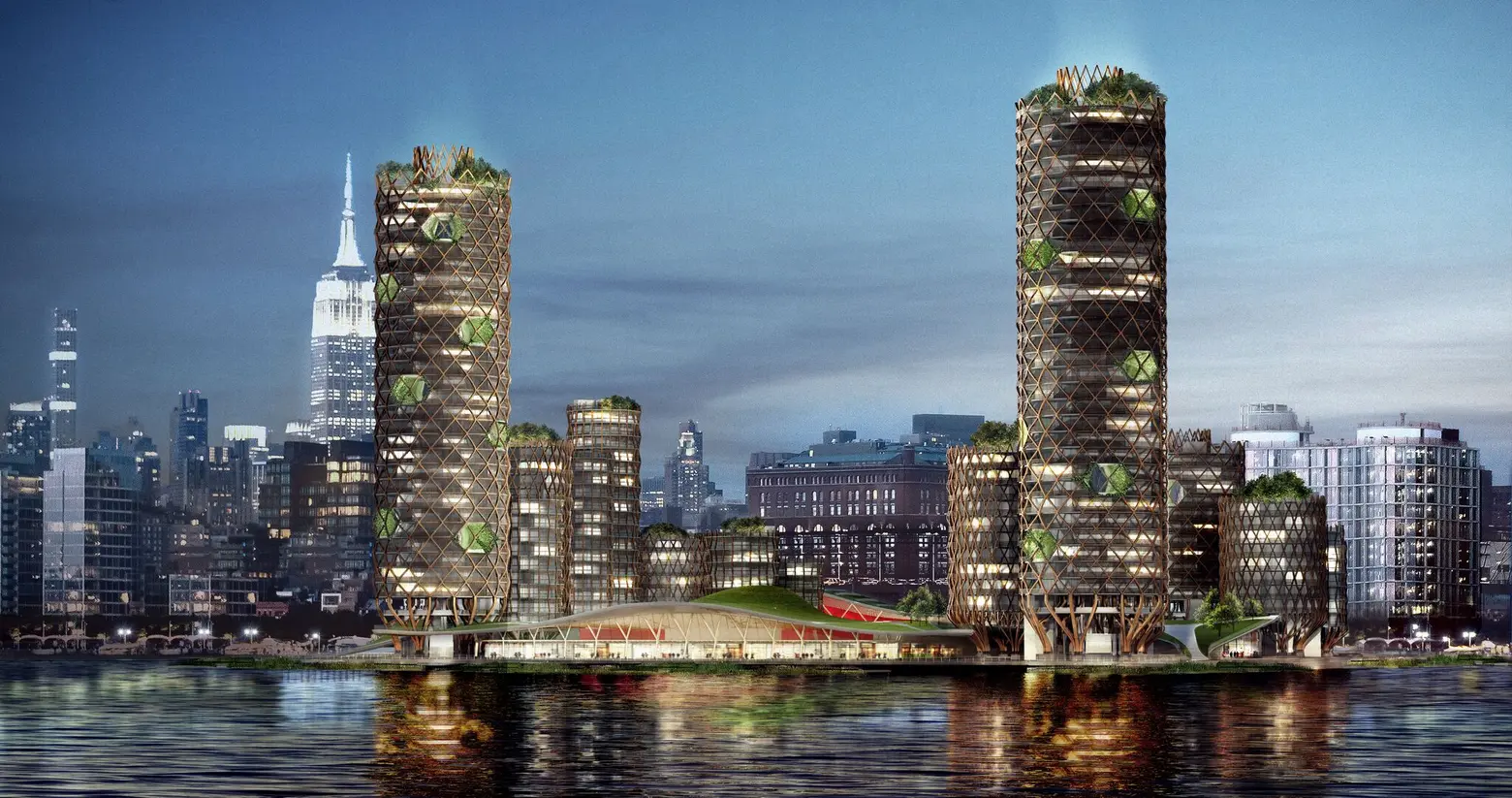
According to DFA, “Beyond 2050, as regular flooding begins to engulf the coastline as we know it, the landscape deck transforms into a floating island with new pathways built to connect the evolved wetland ecosystem to Manhattan.”
The real-life Pier 40 development project currently on the table, which focuses on the redevelopment of the St. John’s terminal building across the street in the West Village, is supported by the Hudson River Park Trust and the de Blasio administration and would include affordable housing.
DFA’s Pier 40 proposal is part of a series of projects meant to envision a better future for New York City. 6sqft previously reported on the firm’s concept of a 712-foot public observation tower in Central Park that would double as a sustainable filtration system to clean the decommissioned and hazardous Jacqueline Kennedy Onassis Reservoir and turn it into a non-toxic, useable freshwater pond.
[Via Dezeen]
RELATED:
- Has Governor Cuomo Found a Way to Fix Pier 40?
- New RPA report is ‘a wake up call’ on rising sea levels and growing flood risk
- Designation of South Village Historic District may mean approval for massive St. John’s Terminal project
- 712-foot observation tower proposed for Central Park would also clean the reservoire
Renderings courtesy of DFA.
